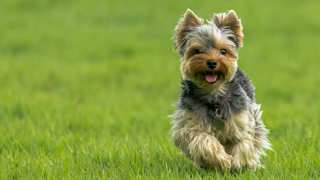Teacup Poodles need brushing often--4-5 times per week, if not daily. For general brushing, the best brush for a Toy Poodle is a medium pin brush; a rake brush for removing dead hairs will come in handy as well, as will a slicker bush for working through tangles and mats. (All these grooming tools are available at pet stores.)
How to brush a Toy Poodle: begin the everyday brushing when the dog is a puppy, if possible, so it will get used to the process. Spray each section as you go with mist from a spray bottle (mixed with canine conditioning spray, if desired); use the pin brush and start with the legs, then the tail, the body, and finally the head and ears, using deep, sweeping strokes to cover as much of the outer coat as possible. Along the way, work through stubborn tangles and mats with the slicker brush.
Once a week, go through the entire coat with the rake brush to remove dead hairs. Make sure to brush deep enough to reach the undercoat, but don't apply too much pressure, as doing so can scratch the dog's skin.
The more often you brush your Teacup Poodle, the easier the process, plus you get some quality time with your furry little friend.








